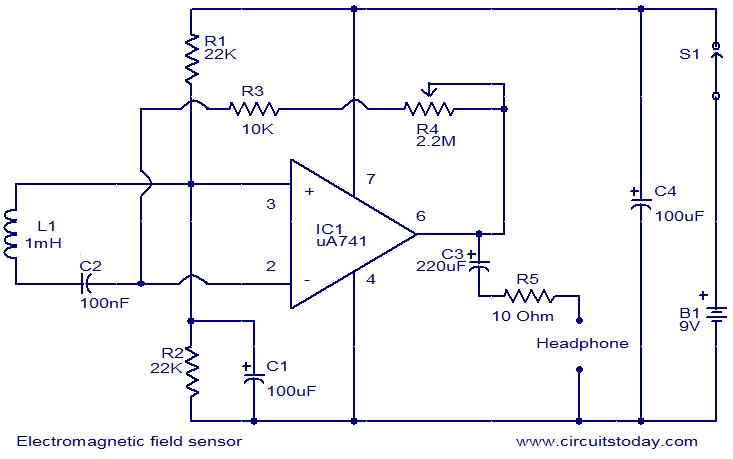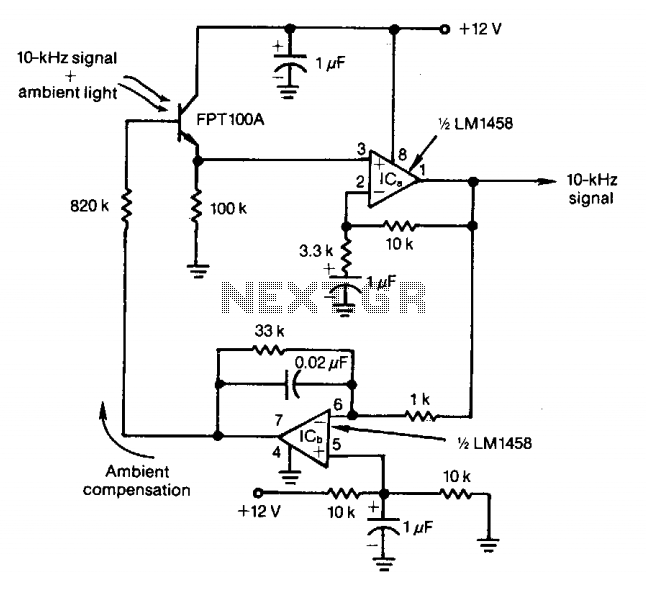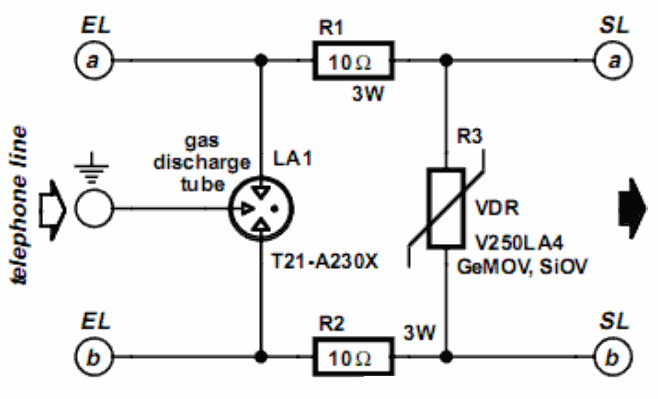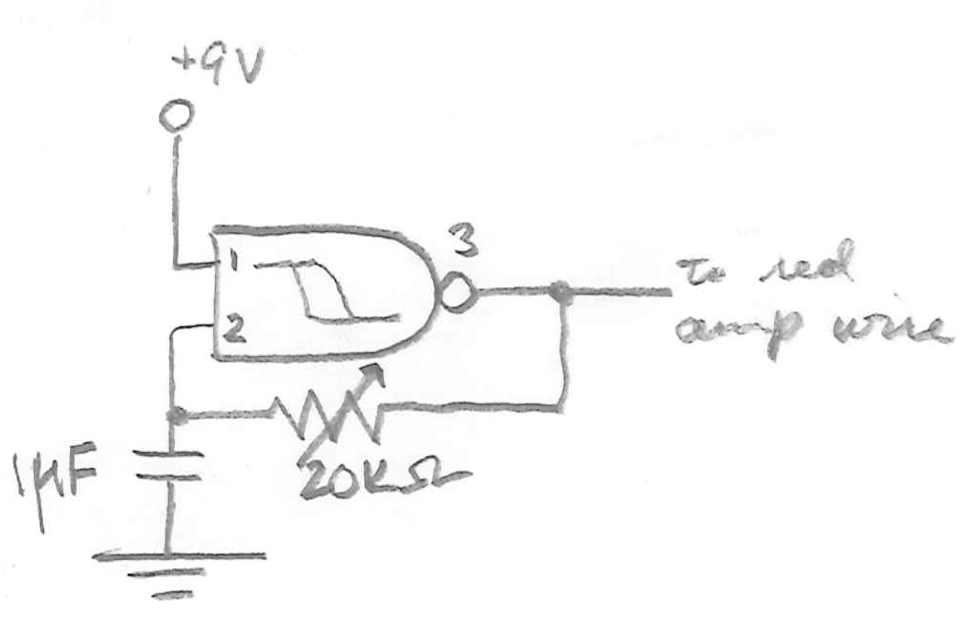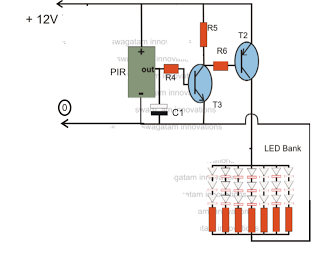
Simple logarithmic amplifier circuit

This simple logarithmic amplifier circuit uses the LT1012, which has a low bias current that allows for 4.5 decades of voltage input logging. Additionally, transistors that can be used in this circuit include the 2N2979.
The logarithmic amplifier circuit designed around the LT1012 operational amplifier is a crucial component in applications requiring the conversion of a wide range of input voltages into a logarithmic scale. The LT1012 is characterized by its low bias current, which is essential for achieving high accuracy in logarithmic amplification, particularly over a range of 4.5 decades. This feature minimizes the offset errors that can arise from input bias currents, ensuring that the output closely follows the logarithmic relationship of the input voltage.
In this circuit, the LT1012 is configured in a feedback arrangement that allows the input voltage to be logarithmically processed. The transistors, such as the 2N2979, can be incorporated to enhance the performance of the logarithmic amplifier. The 2N2979 is a high-speed transistor that can be utilized in the feedback loop or as part of the input stage to improve the linearity and response time of the circuit.
The overall design should include careful consideration of the resistor values in the feedback network, as these will dictate the gain and the logarithmic scaling factor. Capacitors may also be included to stabilize the amplifier and filter out any noise that could affect the accuracy of the logarithmic output.
The output of the circuit can be used in various applications, including signal processing, audio level measurement, and any system where a logarithmic representation of the input signal is beneficial. Proper layout and component selection are critical to ensure minimal distortion and optimal performance of the logarithmic amplifier circuit.This simple logarithmic amplifier circuit use the LT1012 which has a low bias current allow 4 1/2 decades off voltage input logging. Transistors that can be used here could be the 2N2979..
The logarithmic amplifier circuit designed around the LT1012 operational amplifier is a crucial component in applications requiring the conversion of a wide range of input voltages into a logarithmic scale. The LT1012 is characterized by its low bias current, which is essential for achieving high accuracy in logarithmic amplification, particularly over a range of 4.5 decades. This feature minimizes the offset errors that can arise from input bias currents, ensuring that the output closely follows the logarithmic relationship of the input voltage.
In this circuit, the LT1012 is configured in a feedback arrangement that allows the input voltage to be logarithmically processed. The transistors, such as the 2N2979, can be incorporated to enhance the performance of the logarithmic amplifier. The 2N2979 is a high-speed transistor that can be utilized in the feedback loop or as part of the input stage to improve the linearity and response time of the circuit.
The overall design should include careful consideration of the resistor values in the feedback network, as these will dictate the gain and the logarithmic scaling factor. Capacitors may also be included to stabilize the amplifier and filter out any noise that could affect the accuracy of the logarithmic output.
The output of the circuit can be used in various applications, including signal processing, audio level measurement, and any system where a logarithmic representation of the input signal is beneficial. Proper layout and component selection are critical to ensure minimal distortion and optimal performance of the logarithmic amplifier circuit.This simple logarithmic amplifier circuit use the LT1012 which has a low bias current allow 4 1/2 decades off voltage input logging. Transistors that can be used here could be the 2N2979..
